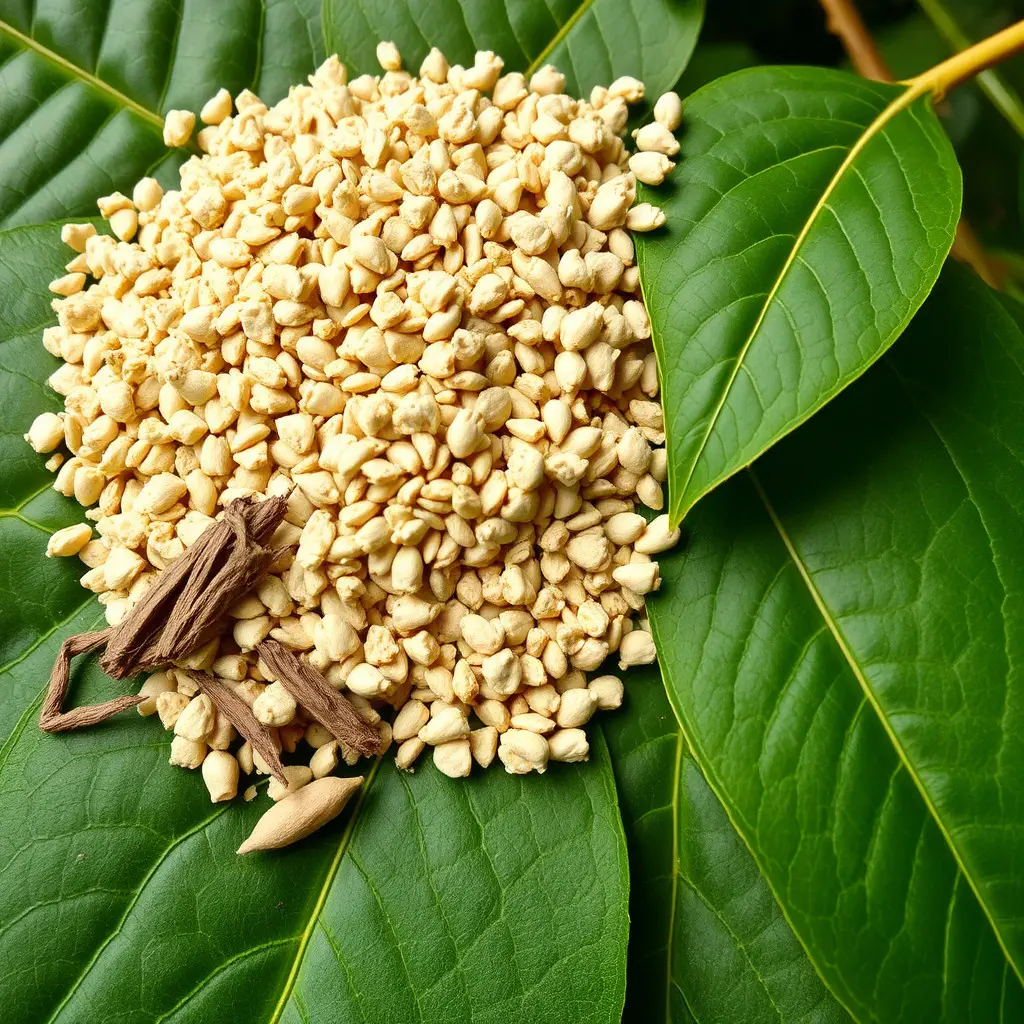Blue Lotus Smoke, a natural remedy from ancient Egyptian medicine, has garnered attention among athletes for its potential to enhance performance without triggering positive results on drug tests. The key compound NORharmine in Blue Lotus Smoke resembles a banned substance but lacks its performance-enhancing effects, thus making it a safer alternative for athletes concerned about maintaining a clean record. This herbal derivative is believed to positively influence the central nervous system by reducing anxiety and improving focus, which can be beneficial during training and competitions. However, athletes must exercise caution as the presence of N-methyltryptamine (NMT) in Blue Lotus Smoke could lead to a positive result on tryptamine or psychoactive substance tests. This issue is critical for competitive athletes, as such a result could lead to severe consequences including disqualification. To navigate this safely, athletes should consult with experts and thoroughly review their sport's anti-doping regulations. The careful consideration of timing and dosage when incorporating Blue Lotus Smoke into their training can help athletes optimize performance while ensuring compliance with drug test standards. It is a compelling alternative for those seeking to enhance their athletic capabilities within the legal framework set by sports governing bodies.
Exploring the intricacies of athletic performance optimization, this article delves into the emerging role of blue lotus smoke as a potential aid for reaching peak physical conditioning. While athletes push their limits, the integration of such substances necessitates a keen understanding of the legal drug test implications they entail. Subsequently, we provide strategic guidance on how to safely incorporate blue lotus smoke within rigorous training regimens, ensuring compliance with regulatory standards while maximizing performance potential. Join us as we navigate the complex intersection of athletic prowess and natural supplementation.
- Optimizing Athletic Performance: The Role of Blue Lotus Smoke in Peak Conditioning
- Navigating the Legal Landscape: Understanding Drug Test Implications for Athletes Using Blue Lotus Smoke
- Strategies for Maintaining Peak Physical Condition: Integrating Blue Lotus Smoke with Comprehensive Training Programs
Optimizing Athletic Performance: The Role of Blue Lotus Smoke in Peak Conditioning

Athletes striving for peak physical conditioning often seek out performance enhancements that align with regulatory standards and health considerations. In this context, blue lotus smoke, traditionally known as ‘Nysa’ in ancient Egyptian culture, has garnered attention for its potential role in optimizing athletic performance without the risk of failing drug tests. Scientific research indicates that the primary compound in blue lotus smoke, NORharmine, is structurally similar to a banned substance often tested for in sports. However, unlike the prohibited compound, NORharmine does not confer performance-enhancing benefits, thus circumventing anti-doping regulations. Athletes who incorporate blue lotus smoke into their training regimen can experience improvements in mood and relaxation without the fear of positive drug tests, which is crucial for maintaining a clean record in competitive sports. Additionally, the plant’s alkaloids are believed to modulate the central nervous system, potentially reducing anxiety and increasing focus during training and competitions. This dual benefit of mental clarity and performance safety positions blue lotus smoke as a valuable tool for athletes aiming to achieve optimal conditioning without compromising their integrity or adherence to sporting regulations.
Navigating the Legal Landscape: Understanding Drug Test Implications for Athletes Using Blue Lotus Smoke

Athlete performance is a multifaceted pursuit that requires meticulous attention to training, nutrition, and recovery strategies. Among these, the use of supplements and alternative remedies has become increasingly common as athletes seek to enhance their natural abilities and accelerate recovery. Blue Lotus smoke, an herbal preparation traditionally used for its relaxing effects, has gained popularity within athletic communities. However, navigating the legal landscape regarding drug tests for athletes who consume Blue Lotus smoke requires careful consideration.
Blue Lotus smoke contains the alkaloid N-methyltryptamine (NMT), which can trigger a positive result on certain drug tests designed to detect tryptamines or psychoactive substances. This poses a significant challenge for athletes who may inadvertently fail a drug test due to the presence of this compound. It is crucial for athletes to understand that many athletic governing bodies have strict policies against performance-enhancing drugs, and Blue Lotus smoke may be misinterpreted as such by testing protocols. Athletes must exercise due diligence and consult with experts or review the specific regulations of their sport’s governing body before incorporating Blue Lotus smoke into their wellness routines. This proactive approach can help avoid unintentional violations that could jeopardize their careers and reputation. Understanding the implications of Blue Lotus smoke on drug tests is essential for athletes aiming to maintain peak physical conditioning while adhering to the rules and regulations of competitive sports.
Strategies for Maintaining Peak Physical Condition: Integrating Blue Lotus Smoke with Comprehensive Training Programs

Athletes striving to maintain peak physical condition often explore a variety of performance enhancers within the bounds of regulatory standards. Among these, Blue Lotus Smoke has garnered attention for its potential to support athletic training and recovery. This plant-based compound, which contains natural psychoactive elements, is known for its ability to induce relaxation while maintaining alertness, a combination that can be beneficial during intense training periods. Integrating Blue Lotus Smoke into a comprehensive training program involves careful consideration of timing, dosage, and the athlete’s individual response to ensure optimal performance and recovery without compromising safety or violating drug test regulations.
Proper administration of Blue Lotus Smoke should be aligned with an athlete’s workout schedule. For instance, consuming it before a training session may help in achieving a state of mental calmness and physical readiness, potentially enhancing the quality of the workout. Conversely, post-exercise use can aid in muscle relaxation and recovery, reducing soreness and promoting faster healing. It’s crucial for athletes to be aware that any substance, including Blue Lotus Smoke, can trigger a positive result on drug tests if used improperly. Therefore, adherence to the guidelines set forth by governing sports organizations and consulting with healthcare professionals are essential steps in safely incorporating this supplement into an athlete’s conditioning regimen.
Athletes striving for peak physical conditioning must carefully consider the role of performance enhancers within the legal confines of their sport. Blue Lotus Smoke, a natural supplement, has emerged as a controversial yet intriguing tool in optimizing athletic performance. While its integration into training regimens offers potential benefits, it is imperative for athletes to understand the implications of drug testing within their competitive arena. By navigating the legal landscape with due diligence and integrating Blue Lotus Smoke as part of a comprehensive training program, athletes can explore its efficacy while maintaining compliance with anti-doping regulations. This balanced approach ensures that athletes can pursue peak conditioning without compromising their integrity or violating drug testing policies.






